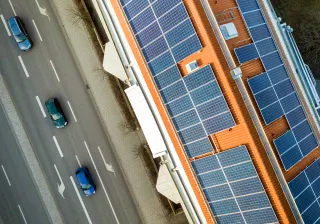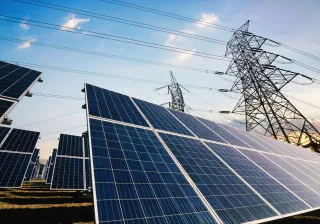In a freshly published book, the EU H2020 EXCESS project partners define positive energy buildings (PEBs), explain how they contribute to climate change mitigation and present the challenges and opportunities for their roll-out. In addition, the book presents some existing examples of PEBs and the technologies that can be applied in PEBs. The book describes potential ways to implement PEBs across different climatic zones. In addition, the needed integration of energy systems and potential business models are discussed. A scientific article was also recently published on the PEB definition, presenting the elements and challenges of the concept.
Mitigating climate change
Climate change is one of the most significant global challenges we face today. The buildings have a significant role in enabling energy transition and mitigating climate change, as they are one of the largest sectors that consumes energy. The emissions caused by the energy use in the buildings can be reduced in two steps. Firstly, by reducing the energy need and improving energy efficiency. Secondly, by the transition towards fully renewable energy production.
What are positive energy buildings (PEBs)?
Currently, the challenge is a lack of an official definition of a positive energy building (PEB), which complicates the development of technical, societal, and business solutions. Based on research, the book defines a positive energy building (PEB) as “an energy-efficient building that produces more energy than it uses via renewable sources, with high self-consumption rate and high energy flexibility, over a time span of one year. A high-quality indoor environment is an essential element in the PEB, maintaining the building occupants’ comfort and well-being. The PEB can also integrate future technologies like electric vehicles with the motivation to maximise the onsite consumption and share the surplus renewable energy.”
Implementing PEBs
Many PEBs already exist in Europe, especially in France and Germany. Many buildings with high performance were identified in Finland. Still, due to their thermal grid integration, a significant number could not be counted as PEBs, as it was not possible to establish whether their performance was indeed net-positive.
Office buildings are the most common positive energy building type (36%), followed by single-family homes (22%) and educational buildings (17%). More broadly, 40% of PEBs are commercially used, 39% are used for residential purposes, and 21% are public buildings. The most common technology integrated into PEBs was photovoltaics.
The wider roll-out of PEBs necessitates market-ready technical solutions using renewable energy sources at high TRL (Technology Readiness Level). These solutions already exist, but only a few providers are on the market. In PEBs, energy flexibility is an important aspect, facilitating the reduction of the mismatch between the energy demand and energy generation from renewables. A well-informed integrator or an interdisciplinary team is needed to reach a well-functioning system. Furthermore, the appropriate technical solutions for the PEB depend highly on the location and climate. For example, Finland has a high seasonal variance of energy need and supply, whereas Spain has lots of solar energy throughout the year.
Preliminary findings suggest that higher initial investment costs remain a barrier to implementing PEBs. However, even though government incentives still play a significant role in supporting PEB projects, some cases demonstrate that PEBs can be realised without significant external financial support. Furthermore, as innovative building technologies become more cost-competitive, energy cost savings during operation will increasingly become the main driver for PEBs. Smart energy management tools are also needed to provide the residents with more control of their energy use while keeping them at the centre of the decision-making.
References
Lavikka, R., Rehman, H. ur, Reda, F. and Kazi, A.S. (Eds.). (2022), Positive Energy Buildings - Concepts, Challenges and Opportunities, Springer, Green Ener. Book available at Springer.
Ala‐juusela, M., Rehman, H.U., Hukkalainen, M. and Reda, F. (2021), “Positive energy building definition with the framework, elements and challenges of the concept”, Energies, Vol. 14 No. 19, p. 6260.








